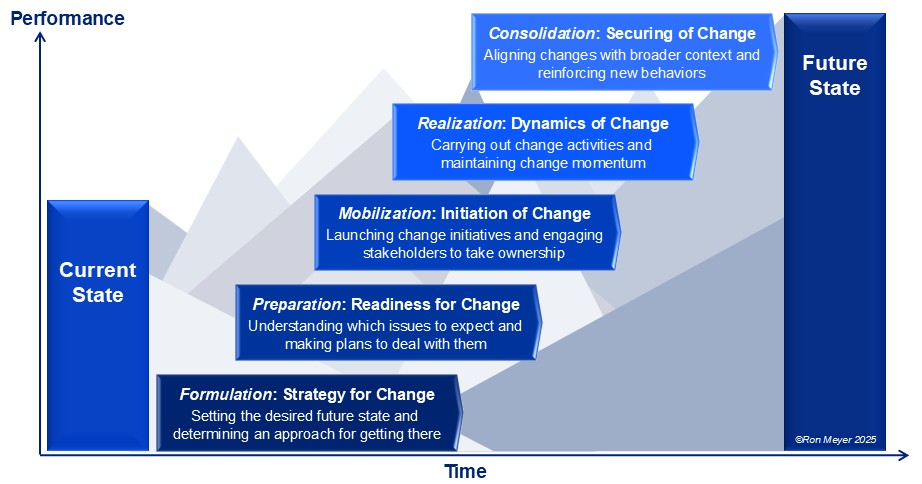As outlined in the Mind the Gap Model (Meyer’s Management Models #1), organizational change is the process of transitioning an organization (or parts thereof) from a current state to an intended future state. Some organizational changes are incremental (small and gradual), others transformational (large and rapid), while most are somewhere in between.
Few organizational changes take place in a fixed number of orderly steps. Most processes are like rivers – messy streams of activities, occasionally speeding up and slowing down, flowing forward, but also curling back. Therefore, it is better to speak of generic phases or stages in a change journey, instead of thinking in terms of distinct change steps.
The Five Phases of Change model outlines the five general stages recognizable in any change journey, as the organization moves from the current state through mountainous ups and downs to the desired future state. The five phases overlap along the time-axis, visually conveying the message that a change journey doesn’t take place in neat sequential steps, but that change activities belonging to different phases can sometimes take place simultaneously and that the journey can occasionally even loop back to an earlier phase. The model is intended to be a simple map to plot complex change processes and to help recognize what type of interventions might be required given the phase that the organizational change is in.

The five generic phases of organizational change are the following: